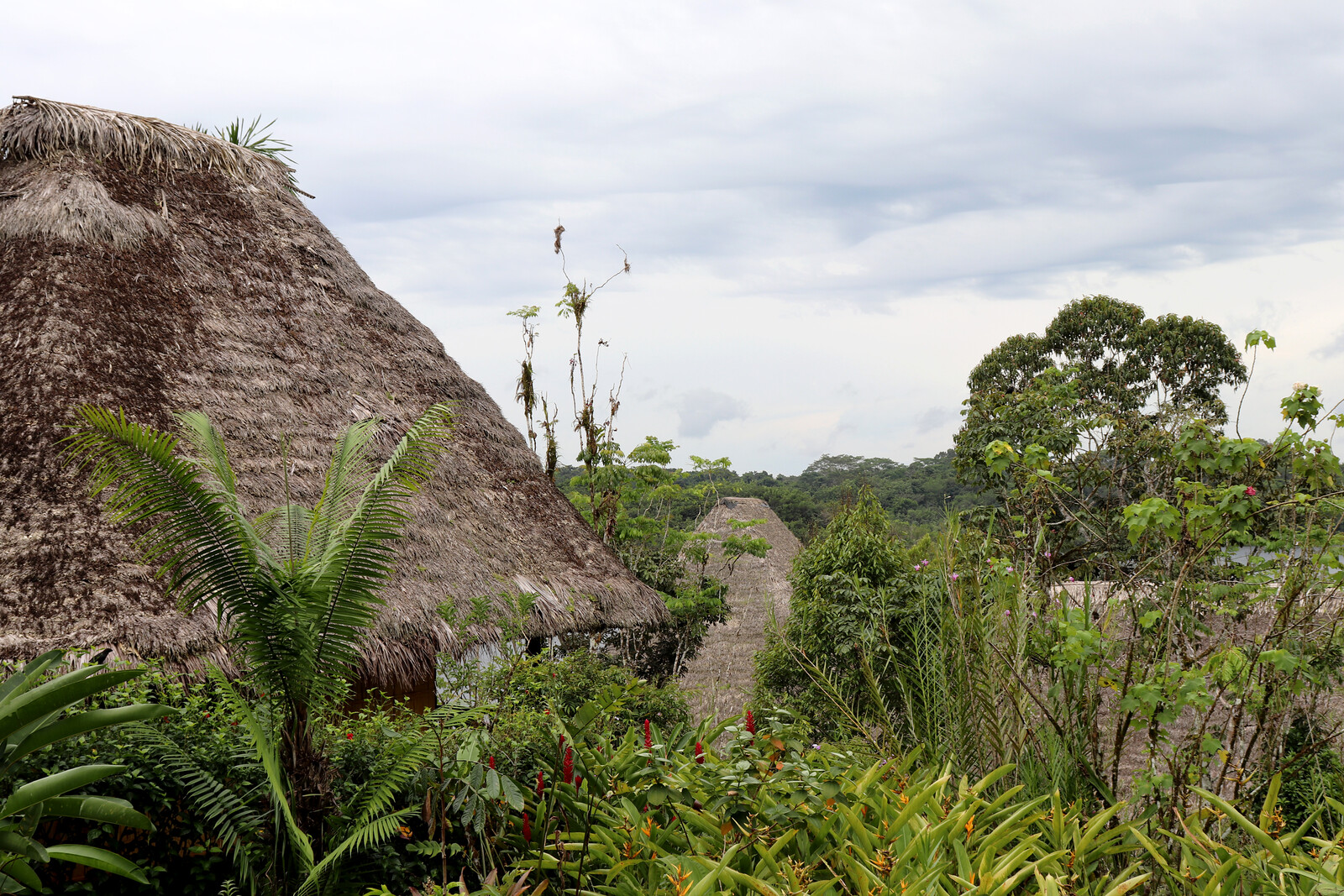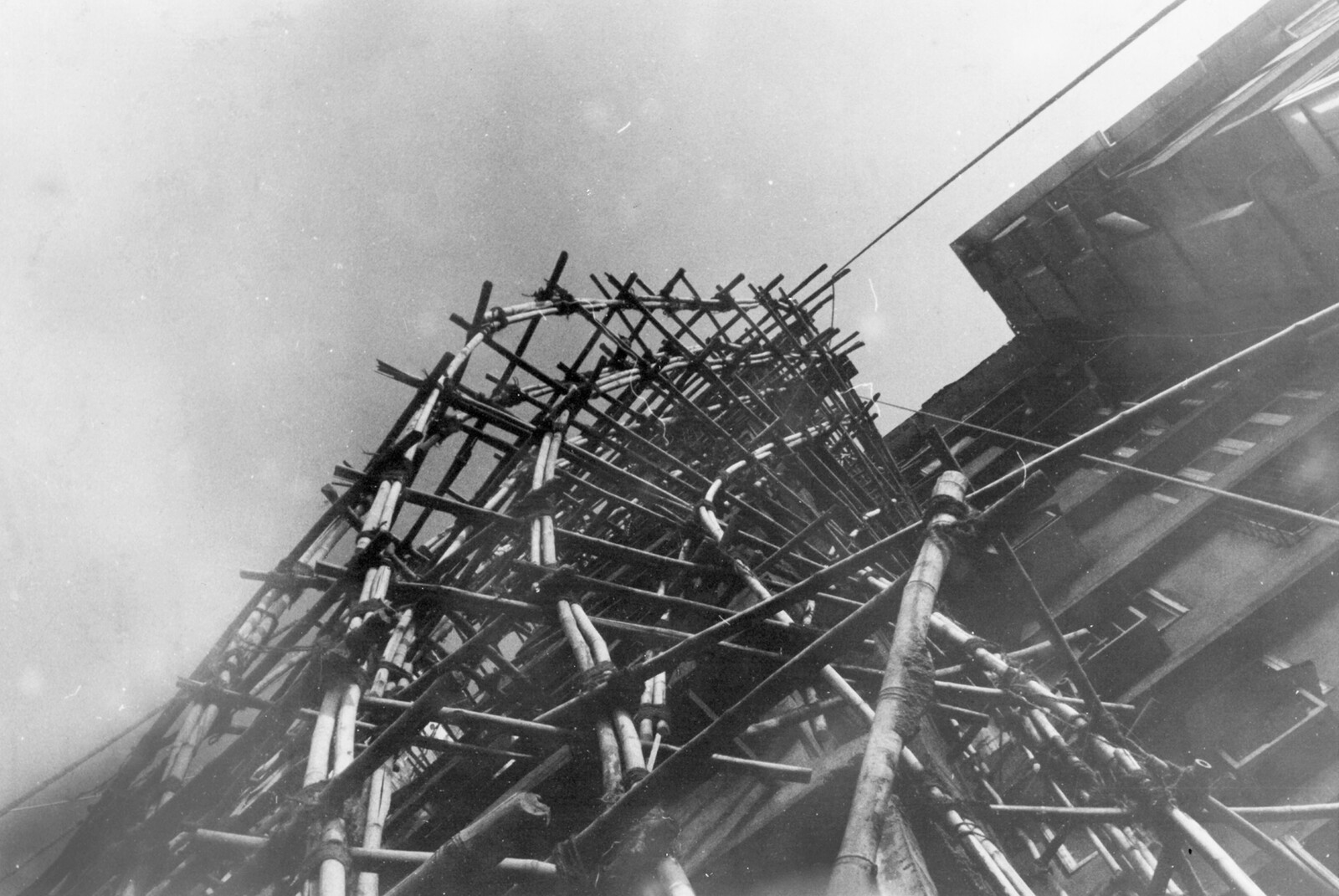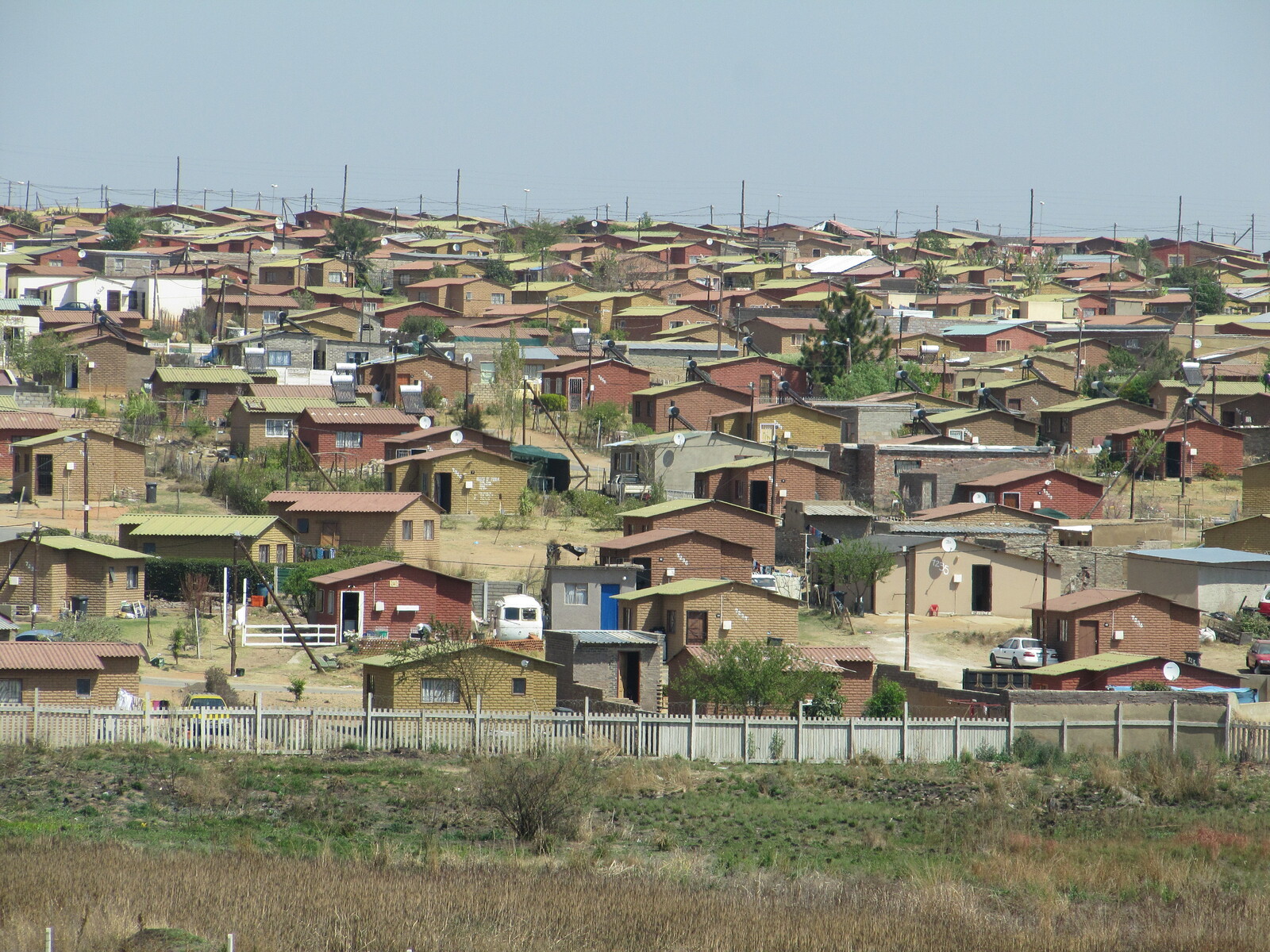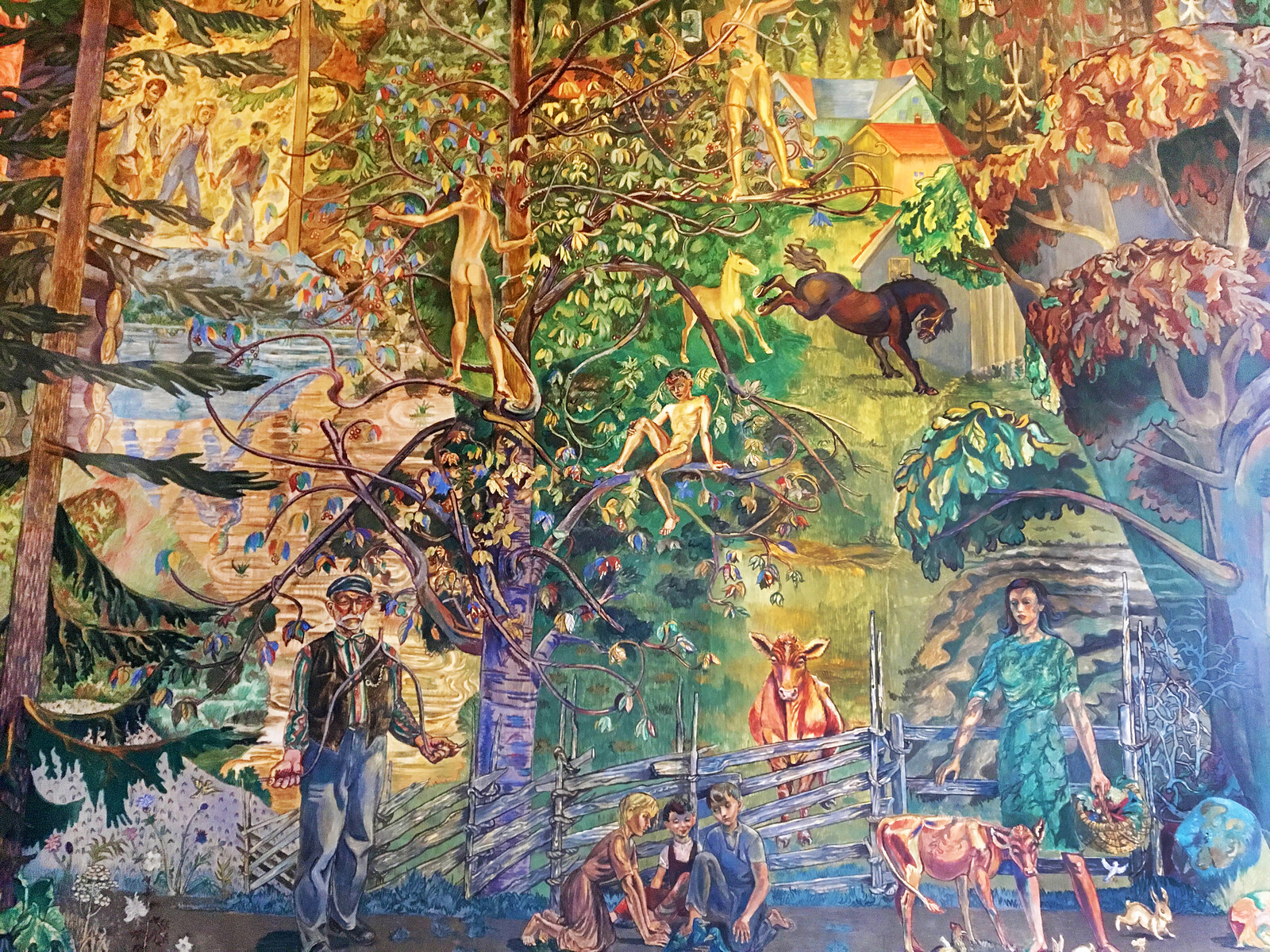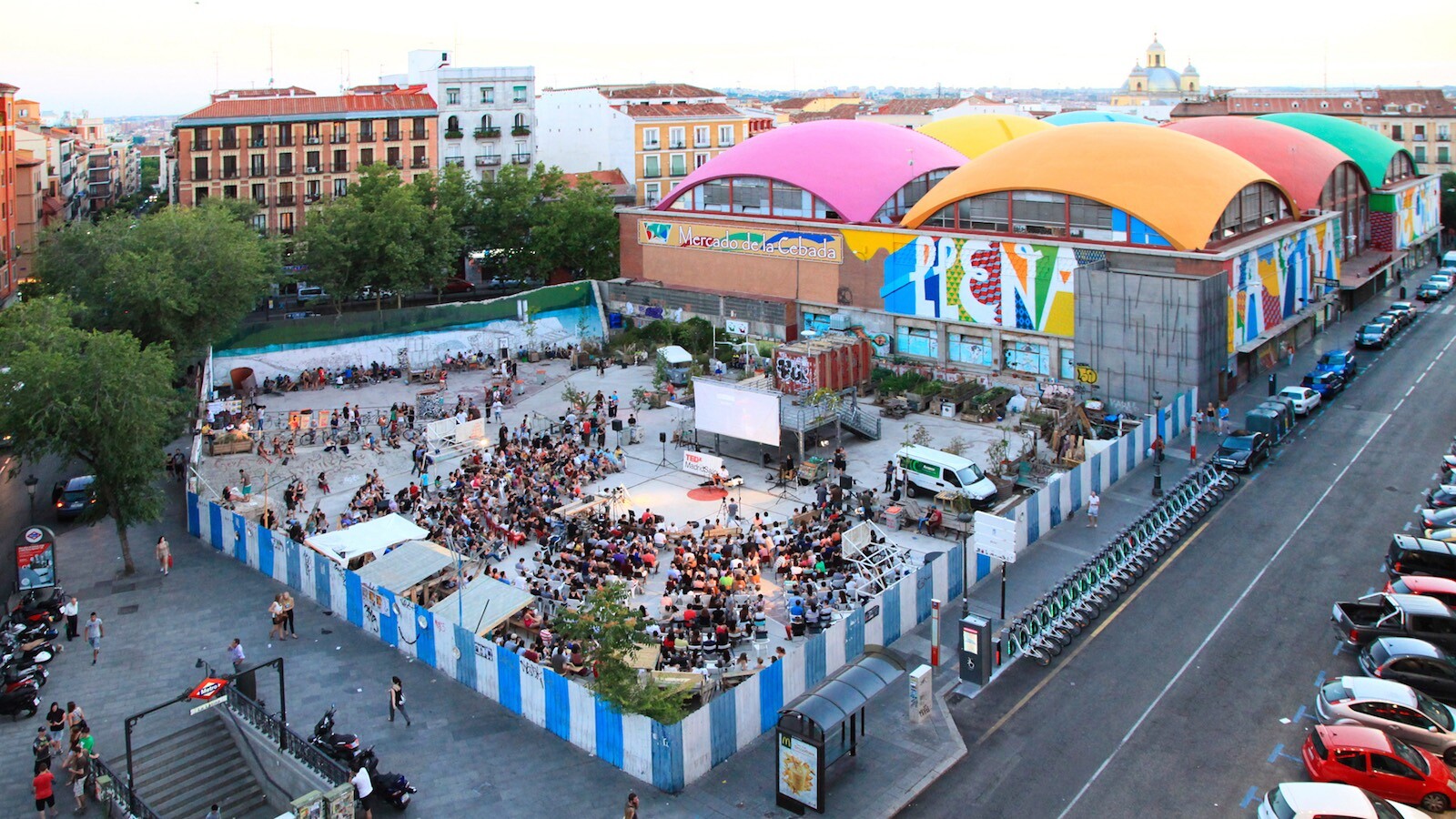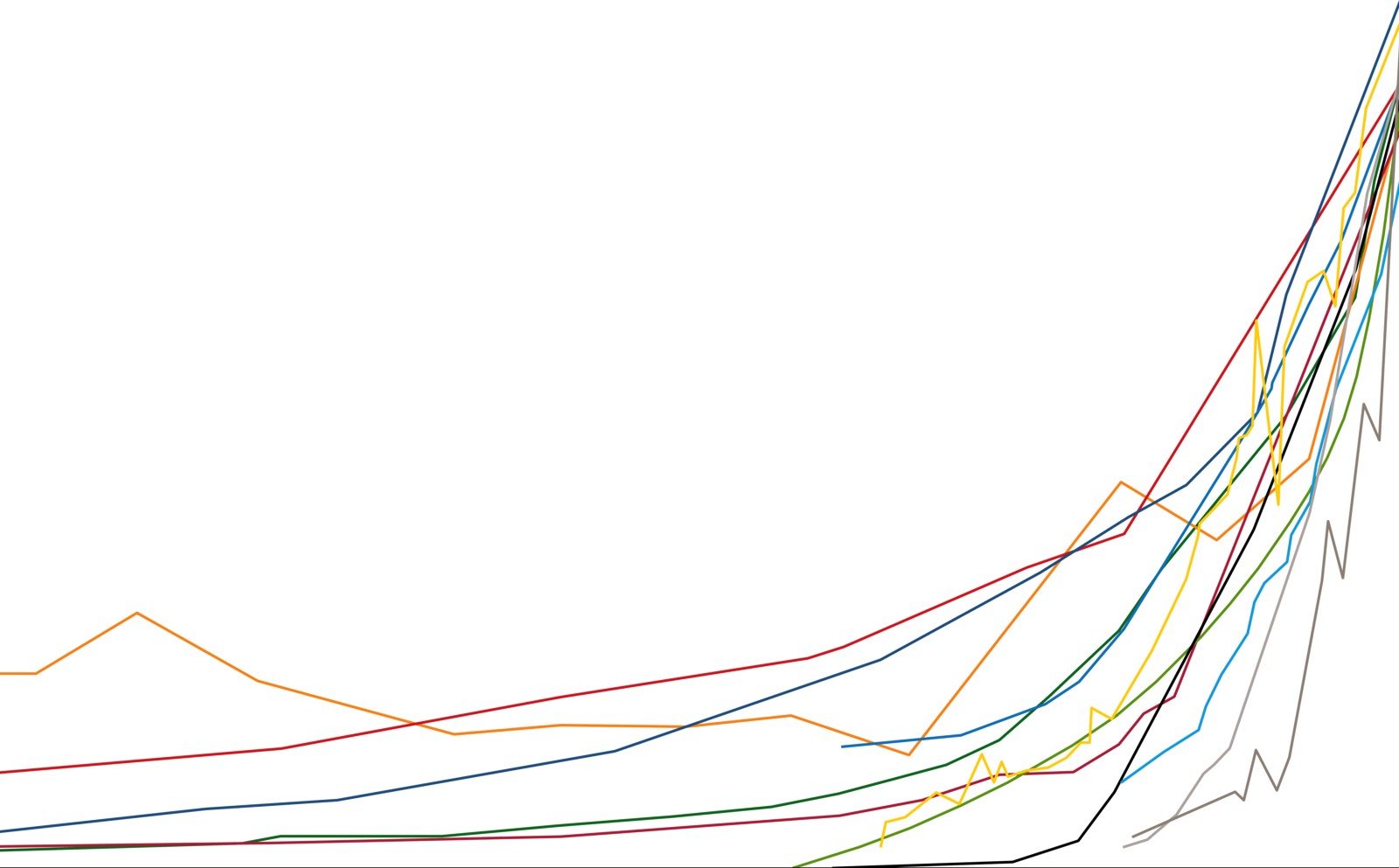Your tour will begin in less than one minute. Please put on your hard hats and headphones now.
You are on a construction site. This is a dangerous area, so please follow the instructions.
Don’t leave the designated safety areas.
You will stay with this group for the duration of the tour. Please keep an eye on each other.
If you get lost on your way, or encounter technical problems with the equipment, please contact the staff in the brightly colored security vests.
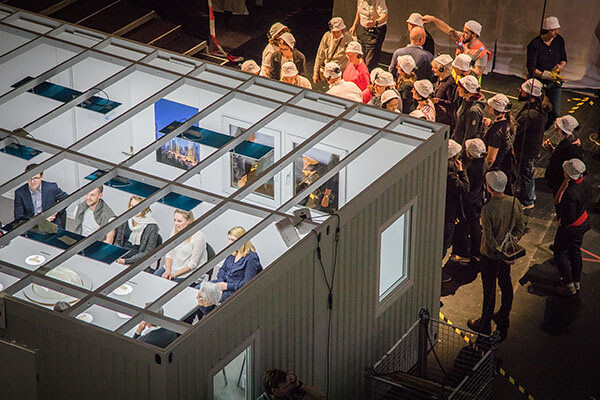

Investor Relations, Sonya Breidenbach
I’ve been working within real estate investment industry for over fifteen years. Today I would like to play a game with you where you slip into the role of investors.
Once a year, the largest and most important real estate event in the world takes place on a wonderful beach in Southern France, in Cannes. It is called MIPIM. Here on the screen you can see all the ladies and gentlemen in black suits. They are looking for new investment opportunities.
This year Dubai set a high standard with a model of a city the size of this room. Düsseldorf is also seen at this event every year, but more modestly than Dubai.
Now we are back in Germany, several weeks later, and we are in an investors meeting.
Let us imagine… You [Briedenbach points at one of the spectators] are the investment director of a German insurance company. You would like to purchase properties for a sum total of €50–100 million euros, as soon as possible. However, you are subject to strict risk limitations.
The person over there is a financial supervisor who keeps track of all of your activities. This gentleman here is responsible for a German retirement fund. His wallet is somewhat smaller. He only has €20–40 million euros with him today. And if he makes a wrong decision, it will be all over the newspaper tomorrow. Your behavior has an effect on a whole generation’s pension.
And you [Briedenbach points at another spectator] represent the Family Offices. They manage the assets of Germany’s wealthiest families. Your job is to maintain the value of the investment. And you like to gamble. Over here are the fund managers from Frankfurt and Munich. Welcome.
So, why are you gathered here today? You all remember the financial crisis in 2008. A great deal of money was lost. For many of you it was a disaster. In a moment we will see the European Central Bank interest rate chart. The ECB consistently tried to calm the post-recession market. As a result we have seen many interest rate reductions, and today we are at zero percent. That means that you have to pay the bank to take your money. That makes it difficult for the insurance group and the pension fund to reach their investment goals. We are talking about a target yield of three to four percent.
So, the problem here is: there is too much liquidity in the market, too much money in the game. We call it FRESH MONEY.
[Andreas Riegel throws €100 bills into the container]
Let us start the game. Every bank note stands for €10 million euro. This is your chance. Please take all the money; everything must go.
[The audience chooses between a selection of investments in Berlin Tegel, Istanbul, or London. Afterwards, Breidenbach spins the roulette-wheel to see what the future brings and then analyzes what that means to the visitor’s investments.]
Unfortunately I have to ask you to leave now. Please follow the signs to Transparency International, where the lawyer Andreas Riegel will tell you all sorts of conspiracy theories about us investors. Don’t believe him!
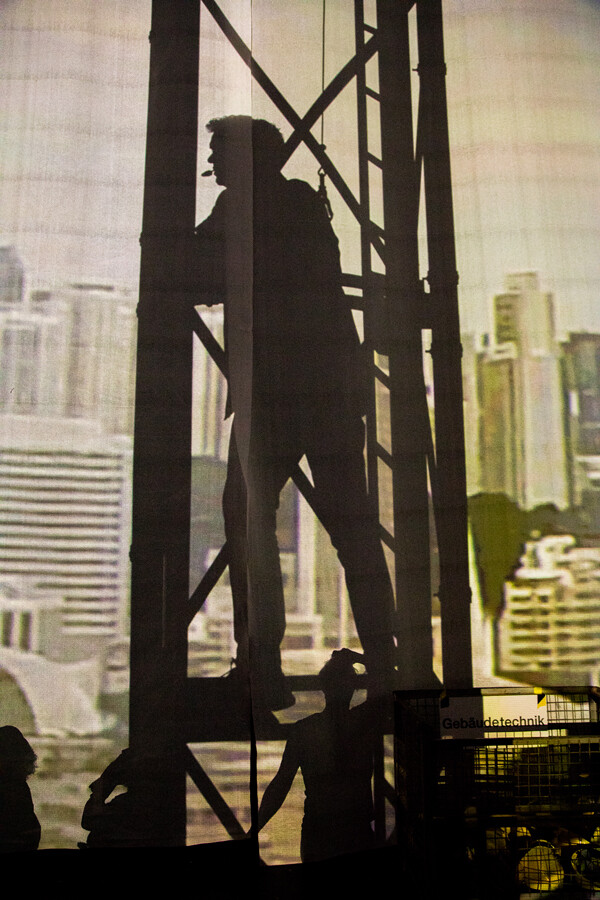

Transparency International, Andreas Riegel
Welcome behind the scenes. Imagine that you are an investigative journalist. The net before your eyes is only partly transparent, like the construction industry. Now, look down. What do you see? You don’t see everything. Corruption is invisible.
Do you see me? I’m here up on the crane. I am Andreas Riegel. I used to believe that a state founded on law worked the same for everyone, and everyone followed its rules, like those Japanese fighters [Riegel points at Jürgen Mintgens and his group] with the black and red helmets down there.
But thirteen years ago I worked on a case in which corruption reached the highest political offices. I had never imagined, that extent of corruption was possible in Germany.
Look at the people in the container down there. I see wheelers and dealers like them a lot. The employees of a public client and an entrepreneur are formulating the specifications for a public call for tenders together, which is against the rules.
They are manipulating it. They’re calling for 1,000 curbs to be installed, and the entrepreneur will offer them for just €1. How can she do that? Because the corrupt public employees told her that they won’t need any curbs.
The competitors for the contract—with the red and black helmets—make realistic calculations and offer the curbs for €20,000, because they assume that they will actually have to deliver them.
They obviously have no chance of getting the contract; their offer is €20,000 more expensive than the bid made by the entrepreneur in the container.
The entrepreneur in the container will give the public employee the usual bribe: 1% of the total contract sum. In this case, €50,000. Here comes the first instalment. [Riegel throws €100 bills into the container]
Let’s talk about the swamp of corruption in the Inner Harbour of Duisburg. That man on the platform [Riegel points towards Dieter Läpple] could be the Mayor. With three or four high-ranking regional politicians, they decided that the State Archive should be erected here in Duisburg, on this site.
One of the decision-makers told the project developer Kölbl Kruse about the decision that very same day. Kölbl Kruse then made a purchase offer, to buy it right under their noses. The city of Duisburg also offered to purchase the land, and should legally have priority to it, but the real estate authority acts as if it had never received the offer. Kölbl Kruse bought the land for €3.85 million euros.
“Coincidentally,” Kölbl Kruse makes a donation of €38,000 to the mayor’s Christian Democratic Party. Also coincidentally, it is paid in four instalments of €9,500 each—just under the €10,000 limit, above which donations must be reported.
Just eight months later, Kölbl Kruse sells the property to Nord Rhine-Westphalia for €29.9 million euros; eight times more than what they originally bought it for. The Court of Auditors later confirm that the purchase price included €4 million euros to bribe the decision-makers. The head of the real estate authorities was later arrested and sentenced to 7.5 years in prison. His manipulations allegedly cost Nord Rhine Westphalia at least €200 million euros.
But honestly, who of you has not bribed someone? We are in no position to point a finger at Greece or African countries. No big construction project here is corruption-free. And the greater the contract sum, the worse the corruption is. Corruption is a tumor. It grows under the surface, and unfortunately, its harmful effects are often left undiscovered.
Please continue to your right down the steps, and then up to the corrupt decision-makers on the terrace.
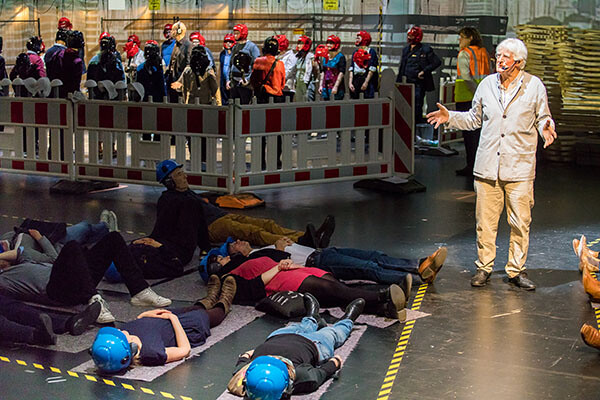

Urban Development, Prof. Dieter Läpple
My name is Dieter Läpple. I am a professor of international urban studies. I’d like to shift the focus from the global North to the global South; first from Berlin to Addis Ababa. I therefore ask you, please, imagine you are a government delegation from Ethiopia.
Ladies and Gentlemen, I greatly value and love your country. I’ve worked with researchers from your architecture department in Addis Ababa for many years, so I am familiar with your country’s problems and strengths.
Ethiopia is one of the poorest countries of the world. Three-quarters of Ethiopians live on an income of less than two dollars a day. Eighty-five percent of the population is still living in the countryside, but more and more people are moving to the cities in the hope of putting hunger and poverty behind them.
However, your cities don’t look like the vision you have of your capital on billboards. You are faced with an urbanization of poverty combined with a sprawl of shanty towns and slums.
Ethiopia faces the tremendous challenge to build housing, schools, and hospitals for the people crowding into its cities. To provide drinking water, to organize traffic, and above all to create job opportunities. In short: your cities are gigantic construction sites. And the main question is how to shape this rapid urbanization process? To find an answer to this question, your delegation makes a study trip to Singapore where I am linked to a research project on the future of cities.
We’re now on a terrace in downtown Singapore, looking at a construction site. Here [Läpple points at a group of migrant workers laying on the ground] we have a dynamic city model to illustrate the urban development.
These are the 1960s. The city is on the ground: the ruins of British colonialism. People are prisoners of poverty, illiteracy, drugs, crime, and ethnic conflicts. Hardly anyone believes that this isolated city state can survive. But let’s see what happens.
The city develops fast. [The migrant workers stand up] The 1970s. The 1980s. The 1990s. The city grows vertically. The population doubles, Hindus, Buddhists, Muslims, and Christians live peacefully, side-by-side. In a few decades, Singapore made a leap from a poor developing country to one of the wealthiest cities in the world.
As a result of the port being moved away from the city center, one of the largest urban expansion projects in the world was created. This giant construction site will develop a ravenous appetite for sand—sand needed to prepare the site, but also to reclaim land.
The total area of Singapore has already grown by almost twenty-five percent. As a result of this reclaimed land, We’re talking about billions of tons of sand. Sand, imported from neighboring countries, resulting in intense conflicts.
Europe and the USA designed the model of the modern city, and Singapore—with its autocratic technocracy—perfected it: the city as an efficient machine. This city-machine liberates its residents not only from the limitations nature’s inconveniences, but also from the individual responsibility for its destruction.
Do you see that air conditioner over there? [Läpple points to the container of Sonya Breidenbach] The air conditioning system is paradigmatic for this city-machine. It facilitates the high economic efficiency, but not for free. The more air conditioners there are, the warmer the city gets. The average temperature in Singapore has already risen by 7°C. And the warmer it gets, the more they need to cool it down. It’s a vicious circle, driven by increasing energy use—mainly from fossil sources.
If the urban model that Singapore adopted from the West would became a role model for your cities in Ethiopia, we would need multiple planets to survive. The actual problem is the efficient construction of large, self-referential systems that develop their own self-perpetuating logic and that can no longer be corrected. The only way is “escaping ahead,” with a continued optimization labelled as “smart city”.
Don’t imitate the western development model. It reached its outer limits a long time ago, and it threatens the global climate. Reinvent your city. Use your strengths, especially your young population and solar energy. Bypass fossil urbanization. Don’t make your cities dependent on cars.
New technologies can help you to find your way. Reinvent construction. Conquer the global monoculture of reinforced concrete. Use the renewable materials that grow in your country. These bamboo fibres [Läpple shows a sample] can replace steel. Look at this “fungus stone.” [Läpple shows a sample] It’s a construction material you can grow yourself. It can be used to build houses, and it can replace cement. To grow it, you need only water, organic waste and CO₂ from the air.
Now please go down to that mound of sand where you will find private entrepreneur Alfredo di Mauro.
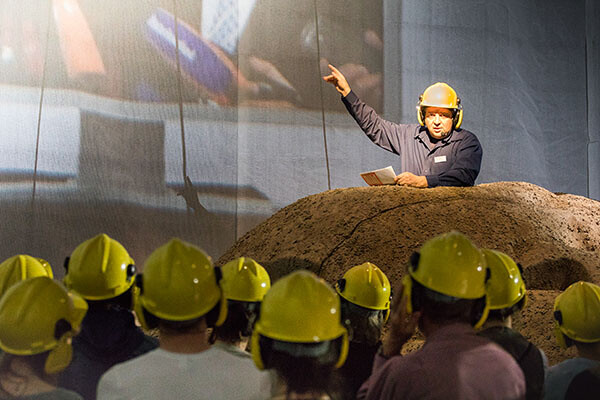

Building Technology, Alfredo di Mauro
My name is Alfredo di Mauro. I’m a building technology planner, for more than forty years now. Some of you might know me from the media. I planned the smoke extraction system at the new Berlin Brandenburg Airport, which supposedly doesn’t work and is blamed for everything. But before the airport I planned another smoke extraction system in Berlin, at the Alexa shopping mall, and that one works beautifully. Only at the Berlin Airport, everything went wrong.
In 2013 I was standing on a terrace like that one [Di Mauro points at the terrace of Dieter Läpple] with airport managers and politicians. The airport CEO Hartmut Mehdorn was standing next to me. We agreed that we were well on our way to inaugurating the new airport. But just one year later, the airport operator and politicians suddenly claimed that my smoke extraction system didn’t work, and that it was my fault. Without the system ever being tested.
There’s the airport. I’m going over there now. You can see the big hall with the check-in counters and the neighboring terminals, which have been completed for years. But it’s still not operating!
We’re going into the smoke extraction canal. Above us is the arrivals hall. One floor that way is the departure hall with check-in, passport check and everything. The canal here is three meters wide and seven meters high, and the walls are fifty-centimeter-thick reinforced concrete. We’re even standing on a one-meter-thick concrete slab. Everything is finished, but it’s never been tested. So, let’s test it together now.
Please take a board in both hands and wave it up and down toward the back of the person in front of you. As hard as you can, up and down. We need three-meters-per-second. It’s like a human smoke extraction system. [The audience makes wind with the boards, and the smoke goes away] See? The principle of the airport’s smoke extraction system works.
So who is responsible for the stagnation of the Berlin Airport? Politicians are responsible. They kicked out the architects, and then a new technical manager came and claimed that my smoke extraction system was a monster, without testing it. He said it had to be divided into three parts, and the contract for dividing the system into three parts had already given to a company of friends of his.
Then the airport CEO suddenly wanted to get rid of me. He suddenly had a “new concept.”
The technical manager was later sacked and sentenced in a bribery scandal, and the airport hasn’t made much progress since. And yet, Mayor Wowereit [Di Mauro points at the audience of Dieter Läpple] still stands on one of its panorama terraces and smiles at the camera. Because of these people, two years of my work were never paid for.
And then there’s the media. Berliner Kurier called me “Smoke-man Di Mauro.” In Stern, they wrote that I was a conman. Since then I haven’t gotten a single contract. But as a matter of fact, the airport owes me millions. If we don’t reach an agreement, I’m going to have to sell my house that I built myself.
Meanwhile at the Berlin Airport they’re just simulating work, like here. Look. [pointing at migrant workers simulating movements of work] They keep the airport working, so it doesn’t rot. This costs about €1 million euros per day. While they’ve been puttering around in Berlin, the Chinese have built and completed sixty airports. And have begun using them, of course. But at the Berlin Airport, they’re in no rush. The salaries are excellent there. A private builder would never allow this.
Now it’s time for you to go to the next station, to the construction lawyer over there. But don’t believe everything he says.
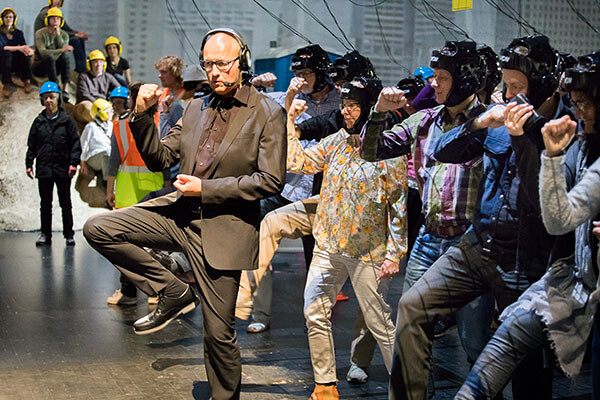

Construction Law, Jürgen Mintgens
You’re probably wondering why I made you wear this sports helmet. My name is Jürgen Mintgens and I’m a lawyer for construction and architecture. And I enjoy fighting.
States and communities lose millions of euros each year to extra costs in large construction projects. These are unplanned costs for things that come up unexpectedly during construction. The public domain needs to defend itself, and that is one of my expertizes. Look at that container over there. Battles over extra costs are fought in containers like that one; battles between the public and entrepreneurs like Mr. Di Mauro over there.
In my free time, I’m passionate about martial arts. I do Kenpo Karate, which is a kind of Kung Fu. Since I’d like to take you to a battle on the construction site today, I’d also like to teach you some martial arts. B
efore every battle, we perform a so-called salutation. [A gong rings] Stand with your feet parallel. Arms out, show the student–teacher–master triangle, shield and sword. Pray that we don’t need to use our weapons. Close.
Now we’re ready to fight on the construction site. I can’t give you details from any ongoing cases, but imagine that you’re on the site of a huge construction project. Something gigantic, with a construction budget of €150–200 million euros or more. A judiciary complex, or a university hospital is being built.
You. [Mintgens points to half of the audience with red helmets] You’re the public sector, with project managers, project leaders, construction experts, planners, architects, engineers, and specialists. Everyone on the side of the public.
Then who are you? [Mintgens points at audience with black helmets] You’re the entrepreneurs, employers. Let’s say you’ll be installing the floors in hundreds of rooms. And those people over there are your workers. But what are they doing? They are just hanging around…
And look what they’re doing now. [Mintgens points at the audience of Di Mauro] They’re leaving the construction site. They’ve stopped working, and they’re leaving. This can mean construction delays. Additional costs. A terrible situation. Of course, you accuse their employers. You come at them with your right arm swinging, so to speak. Everyone with a red helmet follow my lead: take a step forward with your right foot and try to hit your opponent with a right swing.
Employers, you don’t even dispute that the work has come to a stop. But you say: I couldn’t work, because other work that needed to be done first that wasn’t done yet. A heating pipe hadn’t been installed yet, and without the heating pipes from the heat engineer I can’t install the flooring. In the language of martial arts, that’s called “blocking” the attack. I’ll show you how it’s done: you step back and make this movement, away from the body, and the attacker.
But what kind of entrepreneur would you be if you didn’t counterattack? You say: “It’s your fault that I couldn’t work, because your architects didn’t coordinate the work.” You want to be compensated. So after the block you do a step and a hand strike. That’s what we call the “Delayed Sword.” [The black helmets step and strike with their hands]
Now you, the public sector, are under attack. What do you have to do? When everyone on a construction site is fighting, nothing happens anymore. It can trigger a domino effect. Look here: this is a construction schedule. In the columns you can see the weeks when work should be done; in the rows, you see the tasks that need to be completed. On the right over here you see the flooring. If that isn’t done, the tiles can’t be laid, the parquet can’t be installed, the painters can’t work. Each of the subsequent trades will report delays and claim additional costs. The construction project will be delayed more and more, and it will become more and more expensive. That is what the public will notice later.
How do we solve the problem? In my experience, it’s always advisable to try to find an amicable solution. So, a step back with the left foot, go. [The red helmets take a step back] See? A huge space.
What would you, the public, do on the construction site? I would say: take a look at where work could be done. As an entrepreneur you might say then: I’m going to bring in a few more workers to catch up on the work that didn’t get finished. Great. What does the entrepeneur have to do then? Yes, money. You’re not doing it for free! So, if the entrepeneur asks for €100,000, you, the public say, ok, €50,000. The prices always tend to be exaggerated, and he’ll be fine with that.
Doing that would mean avoiding the domino effect that I showed you on the construction schedule. Subsequent work wouldn’t be delayed, and it wouldn’t escalate. That’s the situation. How do you do it in martial arts? Well, I don’t have a comparison. When we fight, it takes just a few seconds, and then your opponent is defeated.
On a construction site, a situation can arise where you find out that there was no real obstacle. It was just a pretext! That’s classic in major construction projects: alleged obstacles. And what do you do? You get really angry and sack them without notice. But where do you end up then? Before the High Court.
There are a number of disadvantages to this. First: the High Court has some excellent lawyers. They aren’t specialized in construction law, but worse still, it takes forever. The first instance and simple building matters will take at least one or two years. Then comes the appeal. My longest case has been ongoing since 2004, and I hope it will be settled before I retire—and I’m not planning that anytime soon.
Imagine that you have been fighting in court today over the sacking, and tomorrow you’re sitting in a container on another site and have to deal with the same people, but as an entrepreneur on a different project. Very awkward.
How can that happen? Well, the current procurement rules mean that the lowest bidder often wins. For that reason, the same suppliers keep working with the same large companies who bid low and then try to maximize their profits through additional costs. That makes construction projects more and more expensive. In martial arts, we would have just defeated them. On construction sites, the villains always get up again. That’s the problem, and it can cost millions in no time.
When you hear the bell, please continue that way and put on a painter’s hat. Popescu will show you how to do work illegally.
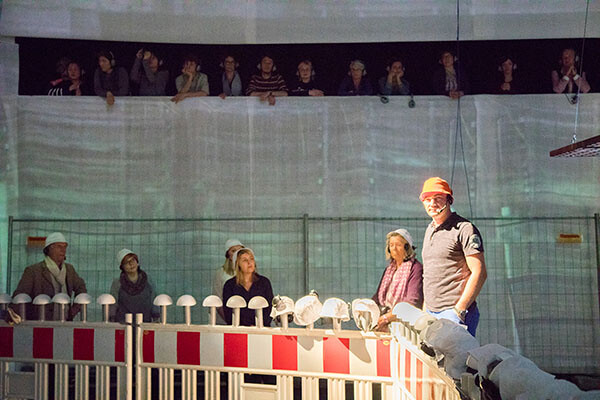

Interior Construction, Ciprian Popescu
My name is Popescu Ciprian, and I have been on construction sites my whole life. Do you see that crane? [Popescu points towards Andreas Riegel] My father was an industrial crane operator.
I come from Jasi. Who knows where that is? It’s the farthest corner of Europe. On the border between Romania and Moldavia. When I was twenty, I went to Bucharest. There I saw the biggest construction site I have ever seen in my life: Ceaușescu’s Palace. Then I understood why we sometimes didn’t have electricity in Jasi. It’s the biggest public building in the world, with 3,000 rooms, one million cubic meters of marble, and 700,000 tons of steel.
I started working in construction in Romania in 2004. I renovated an apartment for a border guard, and the work was off the books. But he paid—he followed the rules. Sometimes I had to work from 7am to 11pm. These stones are from a garden path that I built in Romania with my company, that I founded in 2007. Now let’s work. This needs to go back there. [Popescu starts handing out building material that the audience transports to the other side of the room and starts building]
I had my own company. I had fifteen employees. I built thirty, forty houses. But without professors or architects like those ones [Popescu points at Dieter Läpple] on the terrace. Things were looking up for Romania. We had just entered the EU and there was always work to be done. We built and sold houses. The most expensive one cost €140,000. I got married. But then the economic crisis came in 2011. I got a divorce. My colleagues moved away. I had to find a solution.
I took the bus to Germany. My first job in construction in Germany was in Cologne-Troisdorf. My boss rented apartments to mechanics and other temporary workers from different countries. The apartments looked like these containers. Twenty people or more had to sleep in a place the size of this container. They came from different countries and couldn’t understand each other. He rented out beds for twenty euros a night or more. He earned €5,000 per week. I worked off the books, and my boss didn’t pay me. He still owes me €700.
Now I have a new job, a legal one. It takes between three and five months to build a house today with new modular building techniques. It’s similar to Ceaușescu’s back then, but elegant. They don’t need as many workers like me. See? My colleagues are now unemployed. Back then, 20,000 workers, mostly soldiers, built the palace in three shifts. But with new construction technology, a crane builds the walls. Finished. That’s how everyone gets to live in his own palace. As a child, I thought cranes were great. But now, the cranes are taking my work from me.
Now, please stick the gloves together and give them back along with the headphones, and continue that way to Pest Control.
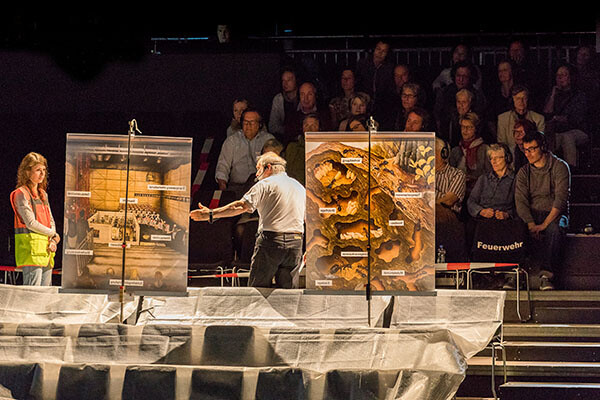

Pest Control, Dr. Reiner Pospischil
Ladies and gentlemen, attendees to the conference for applied insect entomology, my name is Reiner Pospischil. I have studied insects for half a century. I worked in pest control at a leading chemical company for thirty years, and nowadays I have a little company of my own.
For many years, we thought that ants were pests, but nowadays I consider them “beneficial organisms.” But I’m going to focus on a different species today: humans, and how they build. [Pospischil points down at Ciprian Popescu and his audience moving construction material] Note that there are male humans working here. Worker ants are all female: the males are used for copulation with the queen only, and then they die.
The humans here walk in chaotic patterns, rather uncoordinated. Each is trying to go his own way, and to do what they want, to look out for his own interests. Each wants its own nest. Ants are different. Ants do everything together. They search for food together, build their nest together.
Just like ants, humans construct huge structures hundreds of times taller than their bodies, but they are mostly above ground. Ants also build downward and have hundreds of basement floors. These individuals seem to be carrying construction material, but they are quite weak. Ants carry up to three times the weight of their body.
Let’s examine the queen’s chamber. [Pospichil looks inside the container of Sonya Breidenbach] The queen’s chamber is constructed in the middle of the nest and thus well protected.
There, look at the humans: you can tell that they’re having discussions and arguing. Ants in an ant colony would never argue with their queen. The queen decides how and where the nest will be built, and she is always working for the best of the whole colony—not for the wishes or benefits of certain individuals.
Ants are usually descendants of the same queen. That means that they all have the same genetic material and perform the same tasks. Practically speaking, ants are skilled workers from birth.
Take a look at that mound of rubbish back there. It’s made up of leftover concrete, synthetic materials, and other substances that turn up on construction sites and get stored there. There’s a building back there that’s been empty for decades and is no longer needed. All of these materials degrade very slowly. So, how do ants build?
Ants build with organic materials from the surrounding area, and they stick them together with their saliva. Anthills that are no longer needed degrade quickly, and the materials are available for other organisms. Anthills are a fantastic example of sustainable construction.
Humans have investors, planners, lawyers, and more. They discuss and revise plans, and in doing so cause delays in construction and additional costs. They ensure that construction takes significantly longer than what was originally planned. Ants build differently. Ants know exactly what they need to build, and they do it in the time that they need a new area in their nest.
Human construction sites are the size of the future buildings. In ecological terms, that makes humans pests. Ants start very small, with a tiny chamber, in which they can start living right away. From there, they can successively expand the nest until it is big enough for a hundred thousand, or a million ants.
But let’s also not forget that humans have only been building big structures for a couple thousand years. Ants have eighty million years of experience. They know exactly how to design a construction, and they know how to make it environmentally sound. If humans want to survive—and build—for another million years, they’ll have to dramatically change their construction habits. They better try to learn from other species like ants. They better limit their individual interests—if they want to survive.
Thank you for your attention. Please continue in this direction. Your next station is with the migrant workers down by those blue helmets.
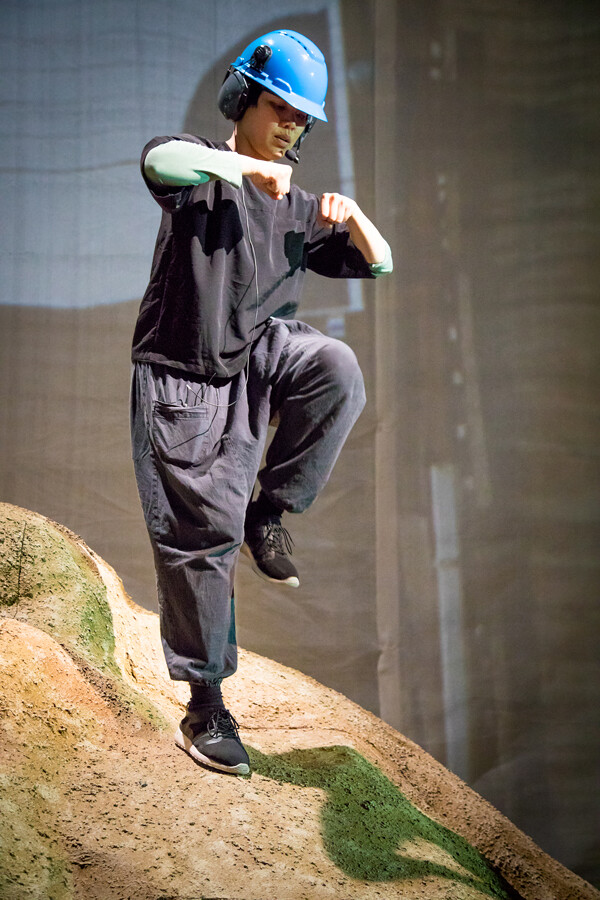

Migrant Workers, Fang Yun Lo
Nihao. My name is Fang Yun Lo. It doesn’t really matter who I am exactly, but I represent 170 million migrant workers. Welcome to China.
Now, close your eyes and lay down on the floor. Imagine the green mountains of Szechuan. Imagine a tiny village. Take a deep breath.
You grew up in a tiny cottage. Your father built this cottage with wood. The whole family works growing green tea. Everyone earns twenty RMB, or one euro per day. Once a week, the tea is picked up from the village and brought to Chengdu, then exported to Europe.
Now, open your eyes! You wake up in a room next to forty other construction workers. You see a man [Dieter Läpple] with a long nose. And your family is no longer there. Welcome to Beijing. Now stand up.
You came to the city in the hope of finding work. You are walking alone in the city. There are construction workers everywhere. There are deals being made everywhere. There are skyscrapers everywhere. In one minute, investors earn more than your family earns in a year. You live in a container.
Migrant workers are not allowed to own their own homes in the city. Your children stayed in the village, because they don’t have the right to go to public schools in the city.
You work on a very large construction site. Do you see the plans for the stadium on the wall? German architects are building a stadium for a sport on ice. 100,000 people will sit in the stadium and be happy. Athletes from all over the world come to the Olympic games.
You see German plans in a computer. Everything is 3D on the screen. The computer knows exactly when every stone needs to be put where and how much it should cost. The stadium by the German architects needs to be finished by the Olympic Winter Games.
Now it’s time for you to go on to the property investments in the container. But please leave your helmets here.
Overgrowth is a collaboration between e-flux Architecture and the Oslo Architecture Triennale within the context of its 2019 edition, and is supported by the Nordic Culture Fond and the Nordic Culture Point.
Category
This text contains excerpts of texts performed as a part of Society under Construction, a project developed by Rimini Protokoll for the Düsseldorfer Schauspielhaus and Haus der Kulturen der Welt, Berlin, and which will be performed during the opening of the Oslo Architecture Triennale, September of 26–28, 2019.
Overgrowth is a collaboration between e-flux Architecture and the Oslo Architecture Triennale within the context of its 2019 edition.
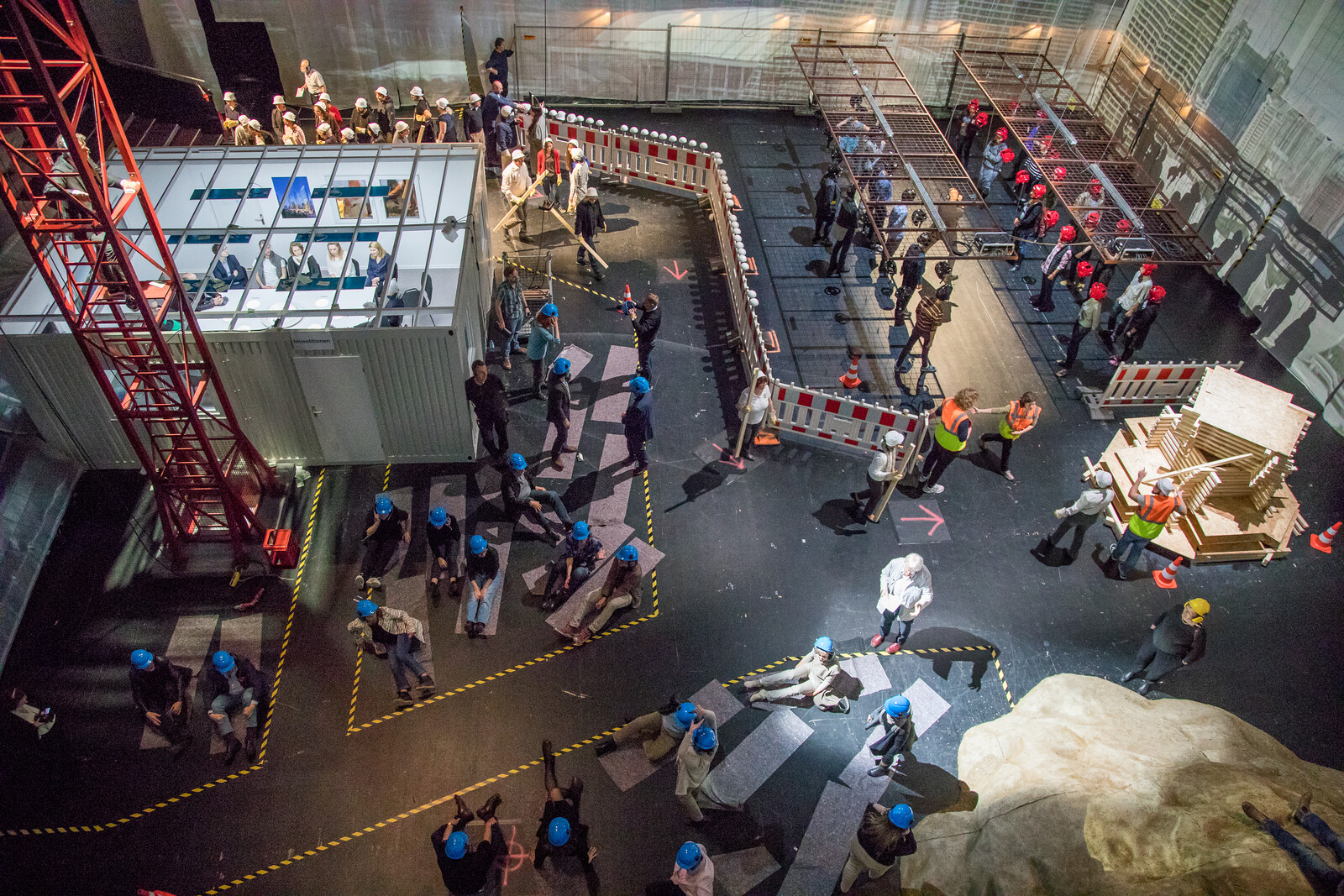
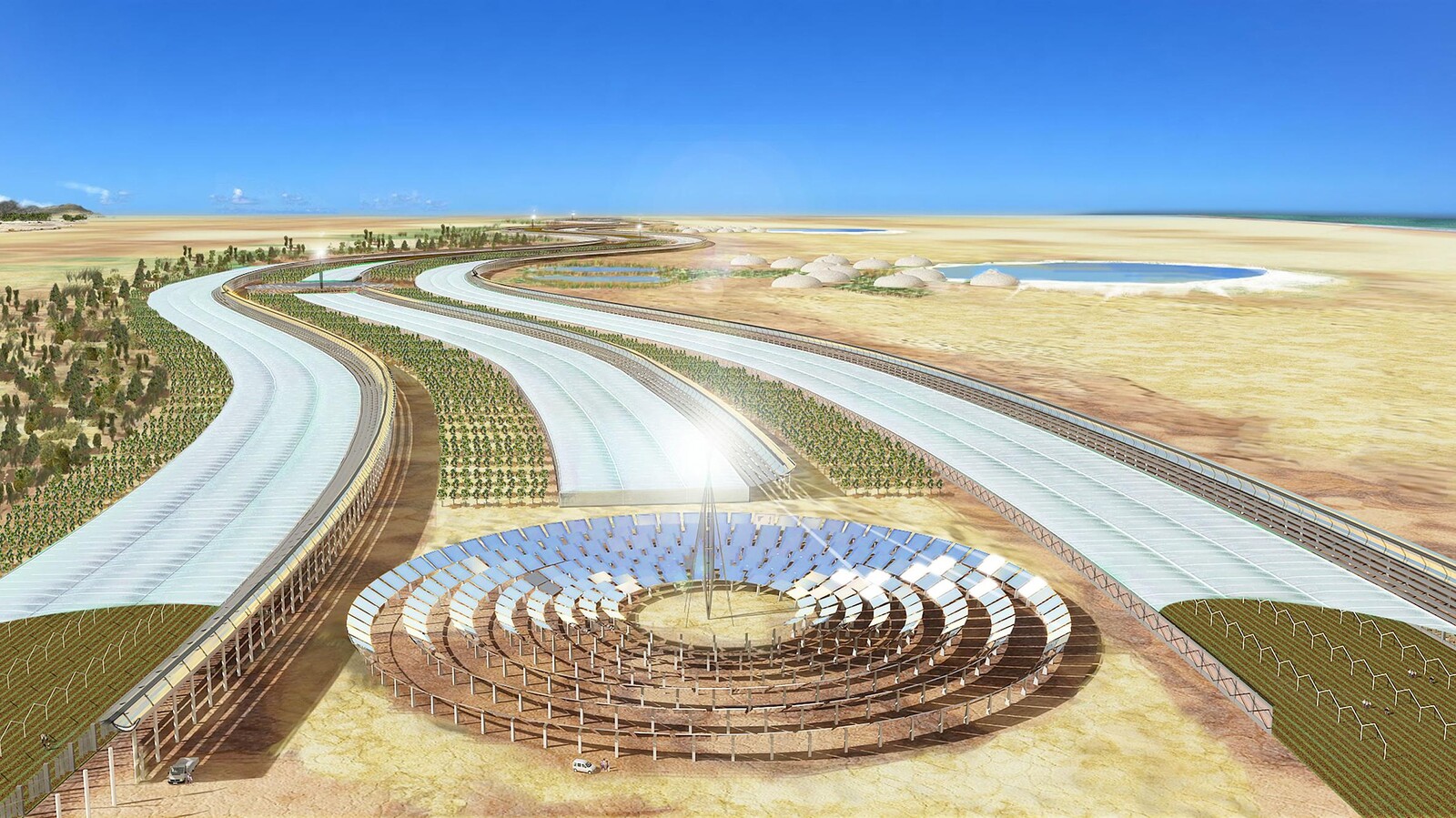
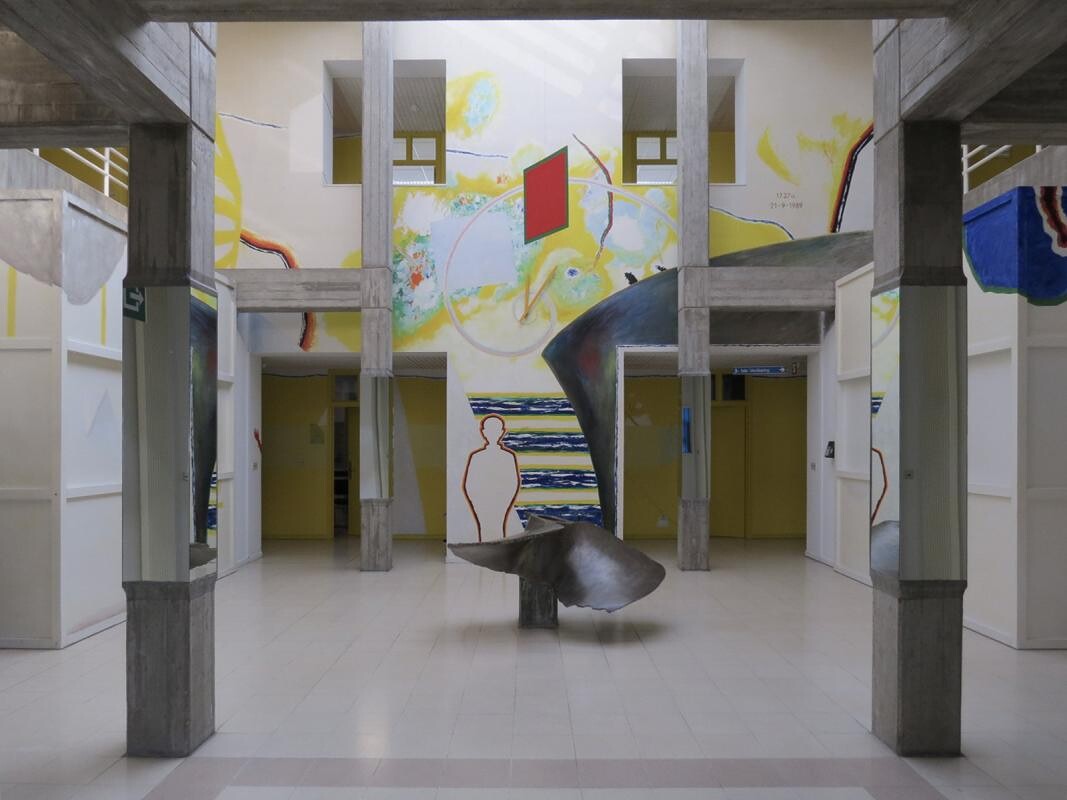


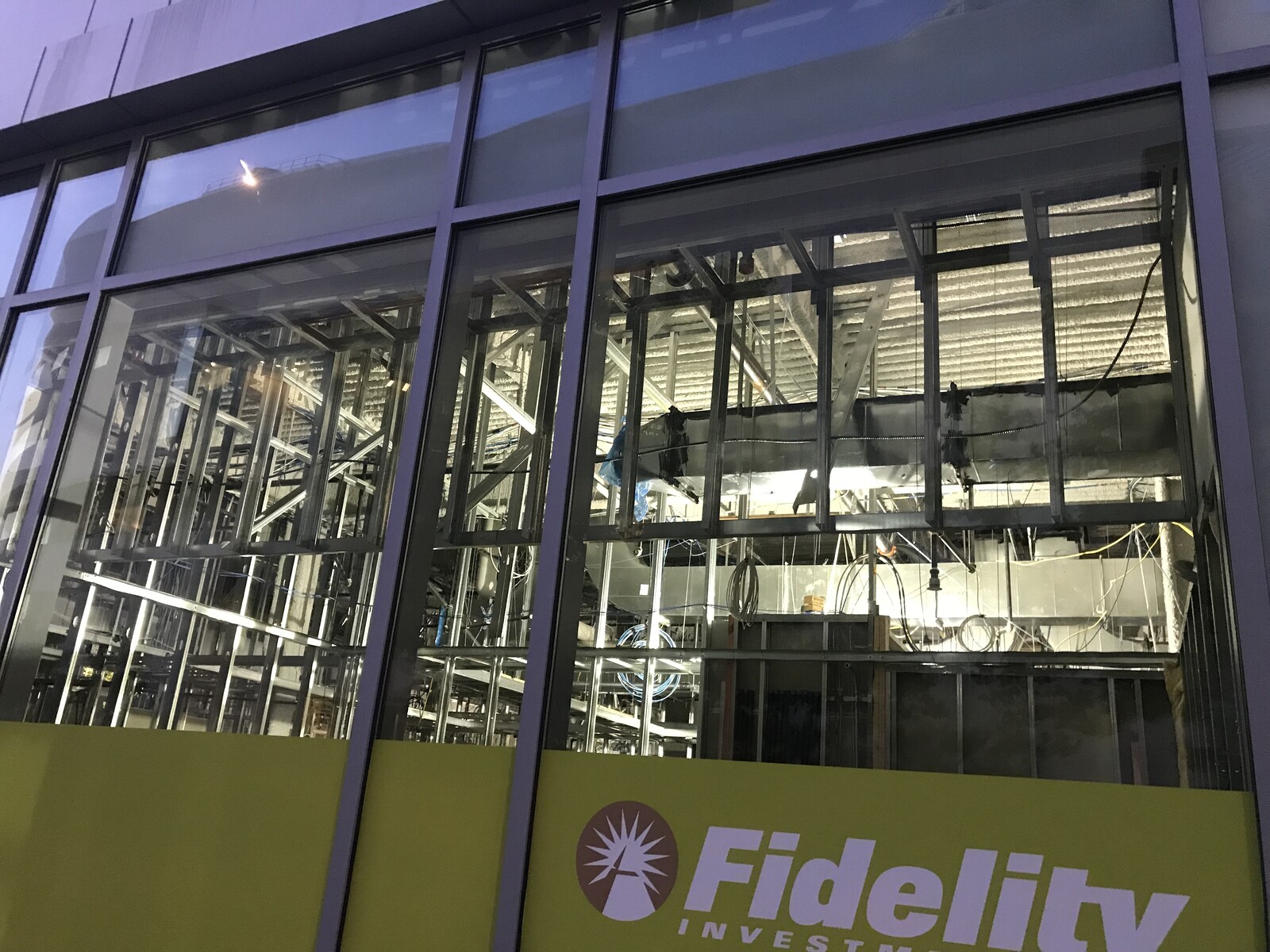

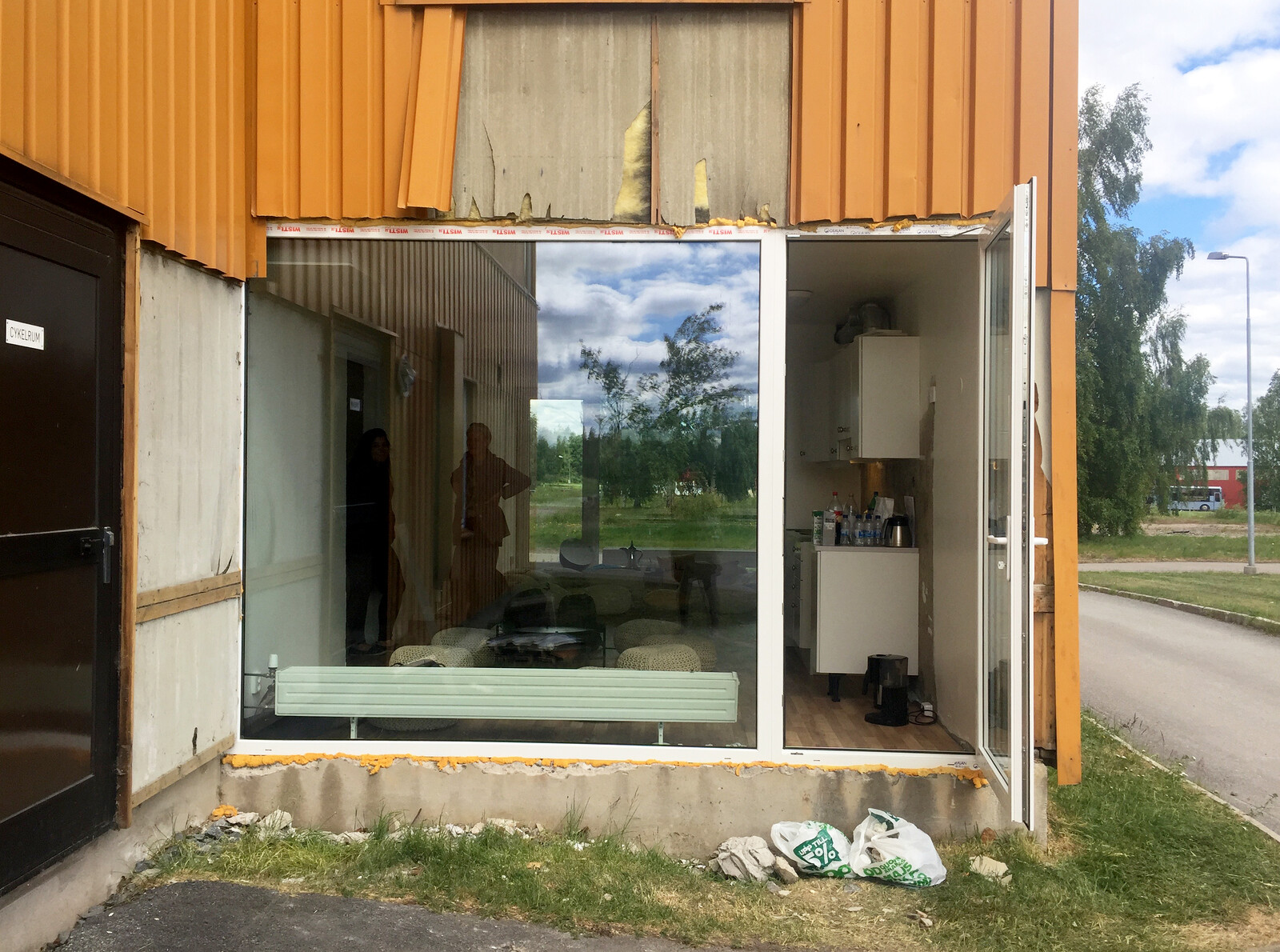


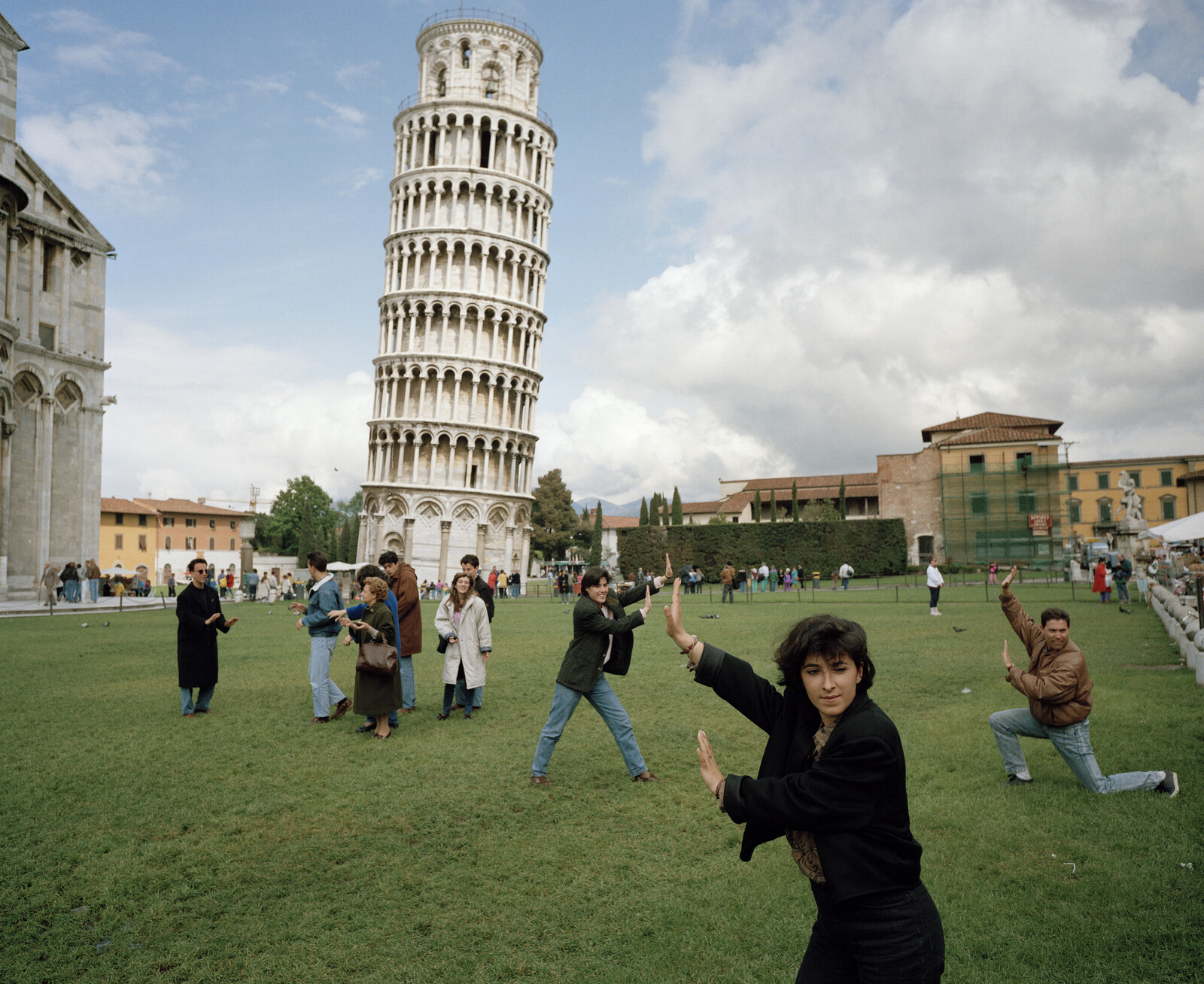

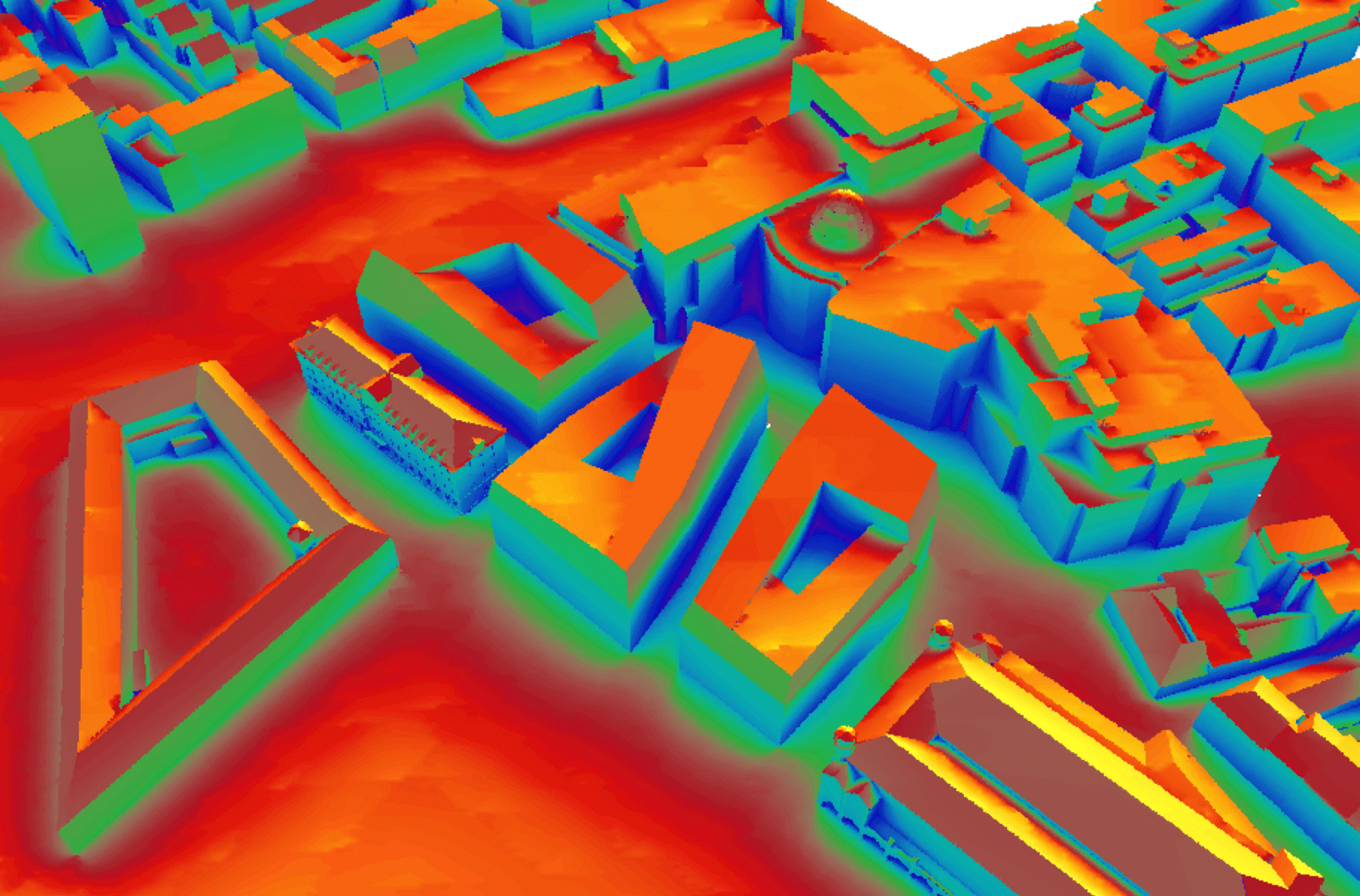
.jpg,1600)

.jpg,1600)
